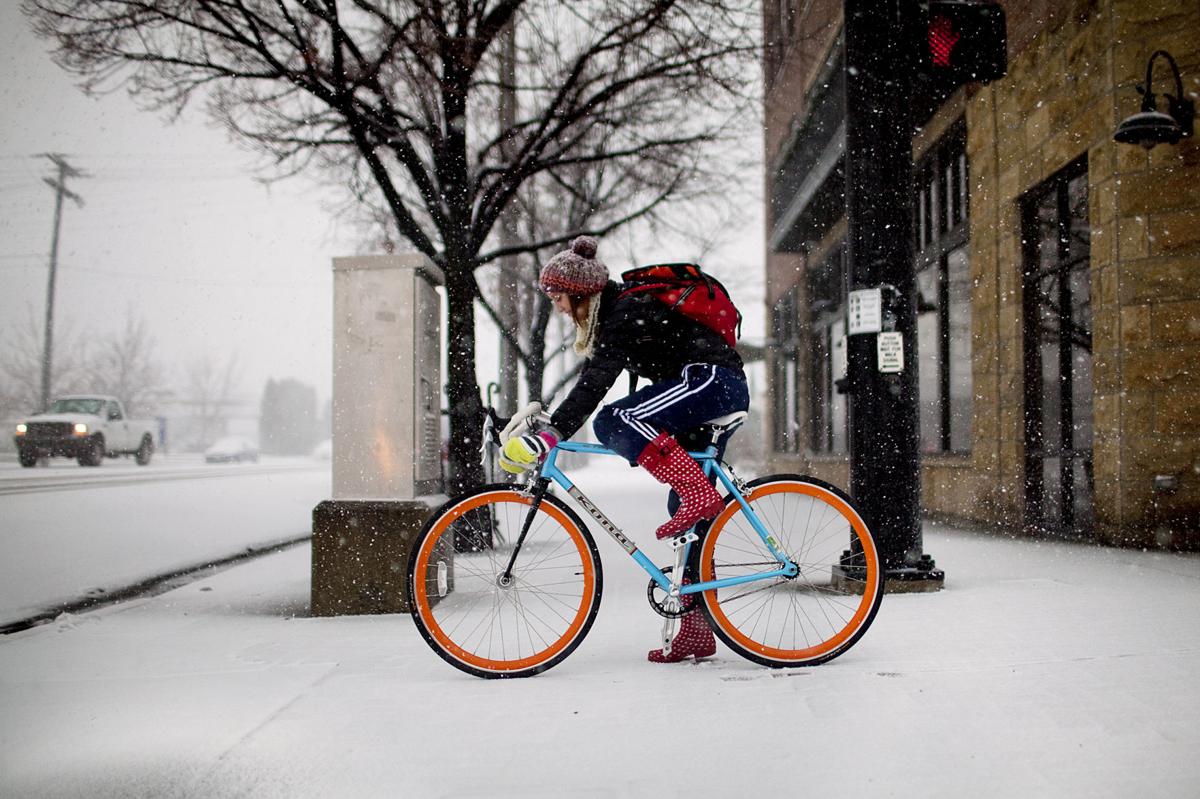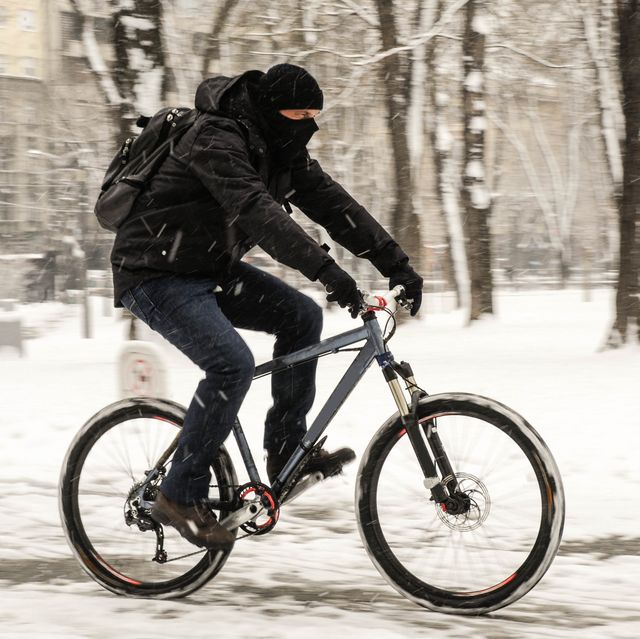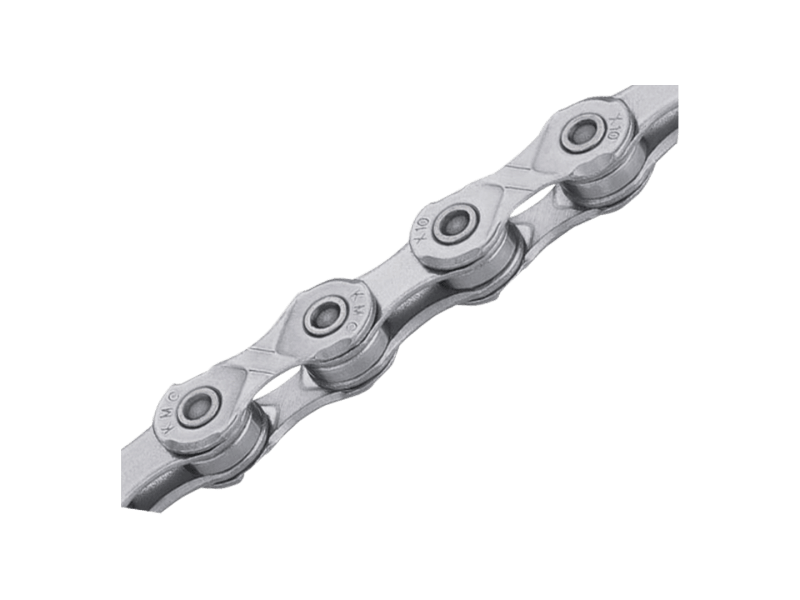To bike commute through winter, dress in layers and use appropriate gear for safety and comfort. Maintain your bike properly to handle winter conditions.
Winter bike commuting can be a rewarding and invigorating experience. Proper preparation ensures safety and comfort during your rides. Dress in layers to regulate body temperature and stay dry. Invest in quality winter biking gear such as gloves, waterproof jackets, and thermal leggings.
Equip your bike with fenders to protect against slush and mud. Use lights and reflective materials to stay visible during darker days. Regularly clean and maintain your bike to prevent damage from salt and snow. With the right approach, winter biking can be both enjoyable and efficient, providing a unique way to stay active and commute sustainably.
Choosing The Right Bike
Choosing the right bike for winter commuting is essential. A proper bike can make your ride smoother and safer. Winter-ready bikes and essential accessories can help you tackle cold weather.
Winter-ready Bikes
Winter-ready bikes are built to handle harsh conditions. These bikes have wider tires for better grip. The frames are sturdy and can withstand snow and ice. Consider bikes with disc brakes. They provide better stopping power in wet conditions. A bike with a lower gear range is also helpful. It makes climbing snowy hills easier.
Essential Accessories
Essential accessories can make your winter commute more comfortable. Fenders are a must-have. They keep slush and mud off you and your bike. Lights are crucial for visibility. Winter days are short, and it gets dark quickly. Use bright front and rear lights. Reflective tape or clothing is also important. It makes you more visible to drivers.
| Accessory | Benefit |
|---|---|
| Fenders | Keep mud and slush off you |
| Lights | Improve visibility in low light |
| Reflective Tape | Makes you more visible to drivers |
Handlebar mitts can keep your hands warm. They attach to your handlebars and create a pocket of warmth. A good pair of winter biking gloves is also essential. They protect your hands from the cold wind.
- Use wider tires for better grip.
- Install fenders to stay clean.
- Equip your bike with bright lights.
- Wear reflective clothing.
- Use handlebar mitts and gloves.
These tips will help you bike commute through winter safely and comfortably. Stay warm, stay safe, and enjoy your ride!

Credit: sustainability.utah.edu
Dressing For The Cold
Winter biking can be a challenge. Dressing right ensures a comfortable ride. The key is staying warm and dry. Let's explore how to dress for cold weather biking.
Layering Techniques
Layering helps you stay warm. It also allows for flexibility. Here are some key tips:
- Base Layer: This should wick away sweat. Choose materials like merino wool or synthetic fabrics.
- Mid Layer: This provides insulation. Fleece jackets work well here.
- Outer Layer: This protects against wind and moisture. Look for waterproof and windproof jackets.
Using these layers, you can adjust based on the temperature. Carry an extra layer in your bag for unexpected weather changes.
Must-have Winter Gear
The right gear is essential for winter biking. Here’s a list of must-have items:
| Item | Description |
|---|---|
| Gloves | Insulated gloves keep your hands warm. Windproof options are best. |
| Helmet Cover | A cover keeps your head warm. It also protects against rain. |
| Neck Warmer | A neck warmer or balaclava shields your face. It keeps the cold wind out. |
| Thermal Socks | Thick, thermal socks keep your feet warm. Wool is a great choice. |
| Shoe Covers | Shoe covers protect your feet from water and wind. Look for waterproof materials. |
Invest in quality gear. It makes winter biking enjoyable and safe.
Maintaining Your Bike
Winter bike commuting can be a challenge. Maintaining your bike is crucial for a smooth ride. Proper maintenance ensures safety and longevity of your bike.
Cleaning Tips
Winter roads can be harsh. Snow, salt, and grime can damage your bike. Regular cleaning is essential.
- Wipe down your bike after each ride.
- Use warm water and mild soap for thorough cleaning.
- Pay attention to the chain, gears, and brakes.
- Rinse well to remove all soap residues.
- Dry your bike completely to prevent rust.
Lubrication And Protection
Winter conditions can dry out your bike's parts. Lubrication helps in smooth functioning and protection.
- Apply lubricant to the chain regularly.
- Use a winter-specific lubricant for better performance.
- Lubricate moving parts like gears and brake pivots.
- Check the lubrication weekly or after every wet ride.
- Consider using a protective spray for added rust protection.
| Bike Part | Maintenance Tip |
|---|---|
| Chain | Clean and lubricate weekly. |
| Gears | Check and lubricate monthly. |
| Brakes | Inspect and adjust as needed. |
| Tires | Keep properly inflated and check for wear. |
Keep your bike well-maintained, and enjoy your winter rides safely!

Credit: www.bicycling.com
Handling Snow And Ice
Winter biking can be challenging due to snow and ice. Knowing how to handle them can make your commute safer and more enjoyable. This section will cover key aspects like tire selection and riding techniques.
Tire Selection
Choosing the right tires for winter biking is crucial. Here are some options:
- Studded Tires: Ideal for icy conditions. They provide extra grip.
- Wide Tires: Better for snow. They offer increased stability.
- Low-Pressure Tires: Improve traction on slippery surfaces.
Consider changing your tires to suit the winter conditions. This will enhance your safety and confidence while riding.
Riding Techniques
Adjusting your riding techniques for winter is essential. Follow these tips:
- Lower Your Speed: Ride slower to maintain control on icy paths.
- Avoid Sudden Moves: Sudden braking or turning can cause slips.
- Use Your Core: Engage your core muscles for better balance.
- Look Ahead: Scan the road for icy patches or obstacles.
Practicing these techniques can help you navigate winter roads safely.
Here’s a quick comparison of tire types and their benefits:
| Tire Type | Condition | Benefit |
|---|---|---|
| Studded Tires | Icy | Extra Grip |
| Wide Tires | Snowy | Stability |
| Low-Pressure Tires | Slippery | Improved Traction |
Understanding these aspects can make your winter biking experience much smoother. Stay safe and enjoy your ride!
Staying Visible
Winter bike commuting presents unique challenges, especially visibility. Shorter days and adverse weather can make it hard for drivers to see you. Ensuring you are visible is crucial for safety. Here, we discuss essential tips for staying visible during winter bike commutes.
Lighting Options
Proper lighting is your first defense against being invisible on the road. Modern bike lights offer various options to keep you seen.
- Headlights: A strong front light makes you visible to oncoming traffic. Opt for LED lights with at least 300 lumens.
- Taillights: Rear lights alert drivers behind you. Flashing red lights can be more noticeable.
- Helmet Lights: Mounted helmet lights provide extra visibility. They help in making eye contact with drivers.
- Wheel Lights: Lights on your wheels make you visible from the side. These are especially useful at intersections.
Reflective Gear
Reflective gear enhances your visibility by reflecting light from car headlights. This gear makes you stand out in low-light conditions.
| Gear Type | Benefits |
|---|---|
| Reflective Vests | Cover a large area of your body. Very effective in reflecting light. |
| Reflective Tape | Stick it on your bike, helmet, or clothes. Adds extra visibility. |
| Reflective Gloves | Visible hand signals for turning. Increases safety during turns. |
| Reflective Ankle Bands | Movement of pedaling catches drivers' attention. Easy to put on. |
Combining lighting options and reflective gear ensures maximum visibility. Stay safe and enjoy your winter bike commutes!
Planning Your Route
Biking through winter can be challenging but exciting. Careful route planning is crucial. It keeps you safe and ensures a smoother ride. Let's dive into the key points for planning your winter bike commute.
Avoiding Dangerous Areas
Winter conditions make some areas unsafe. Icy roads, steep hills, and poorly lit streets pose risks.
- Check weather forecasts daily.
- Avoid roads known for black ice.
- Stay away from steep hills.
- Choose well-lit streets at night.
Alternate Paths
Having alternate paths is crucial in winter. Blocked roads and unexpected conditions can happen.
- Identify several routes to your destination.
- Use bike lanes where possible.
- Avoid busy traffic areas.
- Check for updated road conditions.
Here's a quick comparison of potential routes:
| Route | Length (miles) | Safety Level |
|---|---|---|
| Route A | 5 | Moderate |
| Route B | 6 | High |
| Route C | 4 | Low |
Choose routes with high safety levels. Longer routes can be safer. Stay flexible with your choices.
Staying Warm On The Ride
Winter biking can be a chilly adventure. Staying warm is crucial for comfort and safety. Below are some tips to help you stay toasty during your winter bike commute.
Hand And Foot Warmers
Keeping your hands and feet warm is essential. Cold extremities can make your ride miserable and unsafe. Consider using these tips:
- Wear thermal gloves: They keep your hands insulated.
- Use heated insoles: These can keep your feet warm for hours.
- Hand warmers: Place them inside your gloves.
- Thick wool socks: They provide excellent insulation.
Investing in quality gear can make a big difference. Your hands and feet will thank you.
Warm-up Exercises
Performing warm-up exercises before your ride can boost your body heat. This ensures you start your commute feeling warm. Here are some easy exercises:
- Jumping jacks: Do these for 1-2 minutes.
- High knees: March in place for 1-2 minutes.
- Arm circles: Rotate your arms for 1 minute.
- Leg swings: Swing each leg back and forth for 1 minute.
These exercises increase your heart rate and warm your muscles. Do them right before you head out.
Staying warm on your winter bike commute is possible. Use these tips to ensure a comfortable ride.

Credit: www.outsideonline.com
Health And Safety Tips
Biking through winter can be challenging but rewarding. Staying safe and healthy is essential. Follow these tips to ensure a smooth ride.
Hydration And Nutrition
Winter can make you forget about hydration. Cold weather reduces your thirst, but your body still needs water. Carry a water bottle and take small sips during your ride.
Proper nutrition is also crucial. Eat a balanced meal before heading out. Opt for foods high in protein and carbohydrates. They provide the energy you need to bike through the cold.
| Food | Benefits |
|---|---|
| Oatmeal | High in carbohydrates and keeps you warm. |
| Nuts | Provide protein and healthy fats. |
| Bananas | Rich in potassium and easy to digest. |
Emergency Preparedness
Always be prepared for emergencies. Carry a small first-aid kit. Include bandages, antiseptic wipes, and any personal medications.
Keep a multi-tool in your bag. It can help with bike repairs on the go. A spare tube and a mini-pump can save you from a flat tire.
Dress in layers to stay warm and dry. Wear a moisture-wicking base layer, an insulating middle layer, and a waterproof outer layer.
- Base Layer: Keeps sweat away from your skin.
- Middle Layer: Traps body heat.
- Outer Layer: Protects you from wind and rain.
Make sure your bike lights are fully charged. Winter days are shorter, and visibility is crucial. Reflective gear can also improve your visibility to drivers.
Frequently Asked Questions
How Can I Stay Warm While Bike Commuting In Winter?
Dress in layers to trap heat and stay flexible. Invest in thermal gear, windproof jackets, and insulated gloves. Use moisture-wicking fabrics to keep dry.
What Bike Accessories Are Essential For Winter Commuting?
Fenders, lights, and reflective gear are crucial for winter biking. Studded tires improve traction on icy roads. A good bike lock ensures security.
How Do I Maintain My Bike In Winter?
Clean your bike regularly to prevent rust. Lubricate the chain and gears. Check tire pressure frequently, as cold weather affects it.
What Safety Tips Should I Follow For Winter Biking?
Ride slower to avoid slipping on ice. Use bright lights and wear reflective clothing. Always signal your intentions and stay alert.
Conclusion
Embracing winter bike commuting can be rewarding and invigorating. Proper gear and preparation ensure a safe ride. Remember to stay visible and maintain your bike regularly. By following these tips, winter biking can become a sustainable and enjoyable part of your routine.
Happy winter cycling!

No comments:
Post a Comment